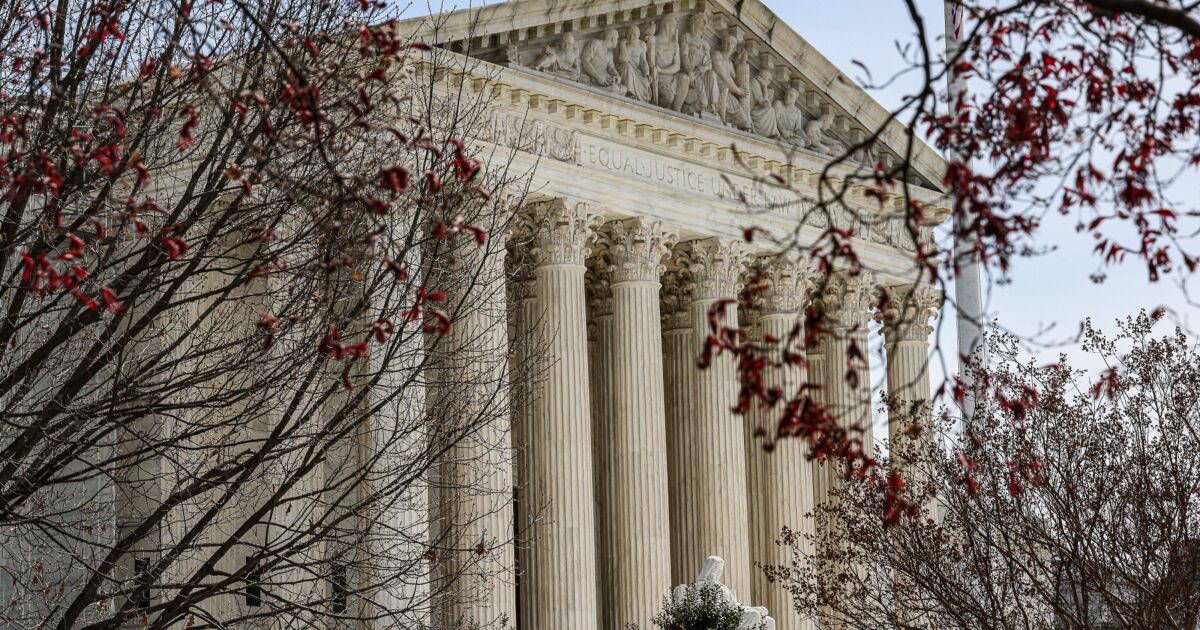In its second case this term involving tax policies affecting financial advisors’ clients, the Supreme Court will decide a complex question about life insurance and the value of an estate.
Connelly v. Internal Revenue Service reached arguments March 27 at the high court, where justices struggled to grasp the complications around the impact on the value of a company for purposes of the estate tax from life insurance proceeds tied to the death of a shareholder.
The petitioner, Connelly, argued that the IRS should not include the proceeds of the redemption of a family-owned company’s policy on his brother’s life in their construction firm’s value because that insurance money immediately bought the remaining shares. The IRS collected additional tax of $889,914 from the deceased brother’s estate based on the agency’s view that the proceeds boosted the company’s value. Two lower courts ruled in favor of the IRS.
Most observers noticed skepticism among the justices for the business owner’s stance that the IRS overvalued the company, although many people would likely agree with Justice Brett Kavanaugh’s observation at the hearing that some concepts in the case are “extremely difficult.” The session came a few months after arguments in Moore v. U.S. about a provision of the 2017 Tax Cuts and Jobs Act in a case amounting to a major challenge to government taxing power.
In theory, many tax experts could see how including the insurance proceeds in the company’s valuation “rises to the level of being unfair” to an estate when the policy requires them to be redeemed by purchasing the deceased family members’ shares, said Jose Reynoso, the head of personal financial planning and advance estate and tax for Citizens Private Wealth.
“It’s really interesting to us as planners and practitioners that the Supreme Court even took it up,” Reynoso said in an interview. “It’s a unique, sort of nichey thing that impacts not too many people.”
READ MORE: A tax on ‘unrealized’ income? A test for wealth laws at the Supreme Court
The issue does come up frequently for the owners of closely held businesses who purchase life insurance policies for their largest shareholders, he noted. The IRS valuation of the construction company “would destroy a valuable succession planning tool that the nation’s small businesses have openly used for decades,” the plaintiff’s attorney, Kannon Shanmugam, said at the hearing, according to the transcript.
The U.S. Chamber of Commerce and the National Federation of Independent Business Small Business Legal Center submitted a brief in support of that position. Still, justices from both the conservative and liberal sides of the court kept asking Shanmugam about the effect on prospective buyers’ offers for the company from about $3 million in insurance proceeds flowing to the surviving brother, the SCOTUSblog reported.
Their apparent siding with the IRS and “tepid reception to the taxpayer estate” was not “entirely surprising” to Frank Paolini, partner with the private wealth services group at the Neal Gerber Eisenberg law firm.
“While I could make arguments on either side of the case, the taxpayer estate must still contend with the logically glaring issue that a policy covering the life of a key shareholder would have an impact on the fair market value of the shares in any other context,” Paolini said in an email.
“For instance, a hypothetical buyer of the company would ascribe additional value to the shares if the company held a policy on the life of key employees and shareholders,” he continued. “Just because the company must use the policy proceeds to pay the decedent’s family for the shares, the shares are still redeemed, and the value of the purchased equity is returned to the company on redemption,” he said.
“Essentially, the value of the shares must go somewhere when the decedent dies. In the end, the family receives the benefit of the payment from the policy and the company receives the shares back in return, which is presumably equal to the value of the shares purchased from the decedent’s estate. If the court held otherwise, it would seem incongruent with many other areas of estate tax valuation,” Paolini said.
READ MORE: Ex-Northwestern Mutual reps win $8M in wrongful termination case
The plaintiffs held that the government was taking positions that are out of step with the fact that the surviving brother would still be subject to capital gains taxes and rulings in other cases that contradicted the use of the proceeds in a valuation. However, their argument revolved around the notion that “before you can value something, you must first subtract the price paid for the very thing you are trying to value,” U.S. Department of Justice Assistant to the Solicitor General Yaira Dubin told the court.
“A redemption obligation divides the corporate pie among existing shareholders without changing the value of their interests,” Dubin said. “And, here, the corporate pie was worth $6.86 million, not $3.86 million.”
Just as in the Moore case, the Supreme Court took up a matter that could reap massive changes to clients’ tax bills, then displayed some reluctance toward such drastic shifts. Regardless, the justices again discussed topics that clients could raise with their advisors and other tax professionals and even touched on potential planning methods.
Toward the end of the 54-minute hearing last month, Dubin spoke with the justices about how a cross-insurance agreement between the brothers or a trust structure could enable the taxpayers to avoid having the proceeds go into their corporation’s valuation. The Supreme Court will release decisions in the Moore and Connelly cases by the end of June or early July.


 Economics1 week ago
Economics1 week ago
 Personal Finance7 days ago
Personal Finance7 days ago
 Accounting1 week ago
Accounting1 week ago
 Economics7 days ago
Economics7 days ago
 Blog Post3 days ago
Blog Post3 days ago
 Economics1 week ago
Economics1 week ago
 Economics5 days ago
Economics5 days ago
 Personal Finance7 days ago
Personal Finance7 days ago










